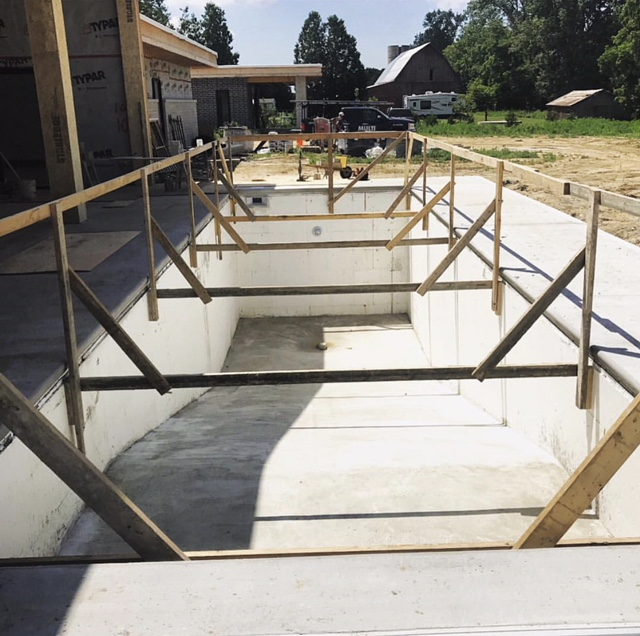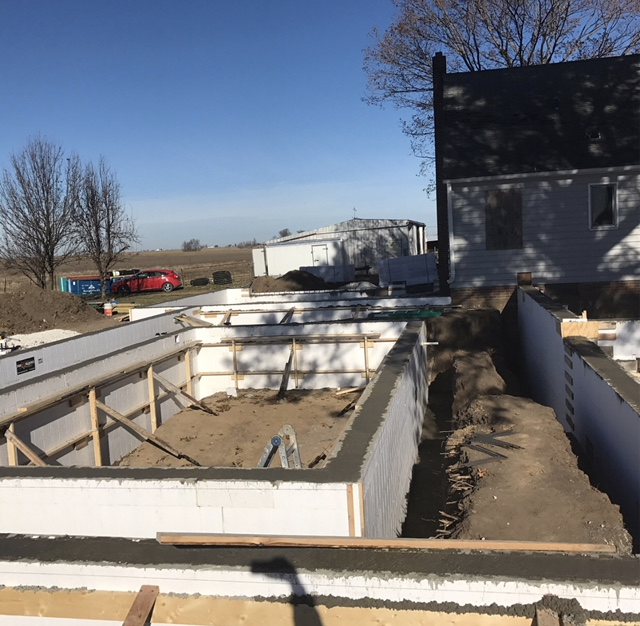
5 Advantages of Building an Insulated Concrete Pool

Building a pool with insulated concrete forms (ICFs), like the Fox Block Series, offers consumers, builders, and architects numerous benefits over other pool construction methods, like shotcrete, precast, and cast-in-place concrete. Insulated concrete form pools are energy-efficient, durable, and low-maintenance, which are essential features for today’s environmentally conscious and busy consumer.
Builders appreciate ICF pool construction because it is faster and easier than concrete pool construction, which saves time and money. Designers and architects enjoy the design flexibility of ICF pool construction. ICF is a viable construction method for above- or below-ground pools, community pools, as part of a custom home, for small-exercise pools, and more.
For consumers, builders, and architects concerned about saving energy, time and money, ICF pools, like ones built with the Fox Block Series, are an excellent choice. ICF pools are also durable, low-maintenance, and offer design flexibility.
Advantages of Insulated Concrete Form Pools
1. ICF Pools are Energy-Efficient
According to ICF magazine, a pool loses about 80 percent of its heat through its bottom and sides because the ground conducts heat more easily than the surface air. Pools built with ICF have continuous insulation on the interior and exterior sides and bottom of the pool. The ASHRAE Standard 90.1-2013 defines continuous insulation as insulation that is uncompressed and continuous across all structural members without thermal bridges other than fasteners and service openings.
Continuous insulation reduces heat loss and helps to stabilize the pool's temperature. ICF pools reduce energy costs over concrete pools by up to 60 percent. Also, because ICF stabilizes a pool’s temperature, the length of a pool season may be increased over that of concrete or fiberglass pools.
2. ICF Pools are Simple to Construct

Building an ICF pool requires less time and labor than constructing a concrete pool for a few reasons:
- The ICF lightweight modular panels are easy to handle.
- For ICF pools, no heavy equipment is required for delivery, lifting, or cutting.
- Unlike concrete pool wall systems, ICF walls don’t require precise excavations. If excavation of an ICF pool is over-dug, the only additional cost is to backfill the walls once they are in place.
3. ICF have Increased Longevity and Durability
The strength and integrity of a durable ICF pool make it disaster-resistant. ICF pools are also mold-resistant. Consequently, ICF pools have longer lifespans and lower maintenance than pools construction by other methods.
4. The Design Versatility of ICF Pools

With ICF pools, fancy pool designs that feature curved walls are simpler to lay out and are more uniform than other methods of pool construction. The design flexibility of ICF pools allows economical choices that include curves, arches, and many other design and shape options.
5. ICF Pools have Smooth, Consistent Wall Finishes
ICF has more consistent wall finishes than standard concrete pools. Pool liners or plaster finishes are used to complete the inside of an ICF pool. A pool liner is installed over the pool plaster and lasts typically up to 10 years.
Installation of a plaster finish is in one or two applications, directly onto the ICF foam inside the pool and is approximately ½-inch in thickness. Pool plaster finishes over ICF are very smooth and 100 percent waterproof.
Building an ICF Pool

Regardless of the pool design, it is possible to build an economical ICF pool, including one with the Fox Blocks Series. Building an ICF pool involves the following basic steps:
Step 1: The first step to building an ICF pool is excavation.
Step 2: Next, the footings are formed and reinforced per engineer's instructions.
Step 3: The concrete is then placed in the footing forms and finished to make a level surface for stacking the ICF blocks.
Step 4: Then, steel reinforcement and bracing are added vertically according to the engineer's specifications to the footings.
Step 5: The next step is to stack of the ICF walls.
Step 6: The pool bottom starts with smooth, compacting fill, such as sand. An under slab moisture barrier and adequate insulation, a rigid sheet foam, barrier that combine waterproofing and insulation in a single product, is placed on the fill.
Step 7: Next, install reinforcement and bracing into the floor according to the engineer's specifications.
Step 8: Before placing concrete, make sure all the reinforcement, strapping, and bracing are in place. Also, cover lights and drains to prevent concrete from entering the openings.
Step 9: The last step is for concrete to be placed into the Fox Blocks to complete the structural shell.
Choose Fox Blocks for Your ICF Pool
Insulated concrete form pools, like ones built with the Fox Block Series, are energy-efficient, durable, low-maintenance, and easily adaptable to most swimming pool designs. ICF pools are also fast and easy to construct, which saves time and money.
Please visit Fox Blocks for more information on building a pool with insulated concrete forms.